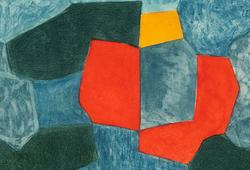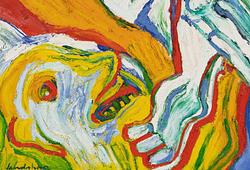A gilt-brass miniature casket by Conradt Mann (master in Augsburg and Nuremberg, fl. ca. 1600-1630).
Gilded brass, copper, and steel. Of rectangular form with richly engraved overall. Front with a false keyhole. Lid with handle and a sliding panel covering the keyhole. Interior with locking mechanism shooting four bolts. Signed on the lids sliding panel: "CONRADT • MANN •" and on the inside of the lid "C M". Length 7.5, width 5, height 4 cm. Key included.
Literature
Claude Blair: Arms, Armour and Base-Metalwork, The James A. de Rothschild collection at Waddesdon Manor, London 1974, pp. 483-487.
More information
The auction's casket belongs to a well-known distinct group of small caskets made of gilded brass with engraved decoration, which in German are called "Mankästchen" as a number of these bear the signature of either Michael or Conradt Mann.
Regarding Michael Mann, it is known that he was active in Augsburg by at least 1589. He later moved to Nuremberg and then worked in Fürth and Wöhrd, where he died around 1630. However, the sources are silent about Conradt Mann; nothing seems to exist. Given the close similarity, both in form and decoration, among preserved signed caskets by either of them, it suggests that they must have worked closely together and that they were related to each other.

















































































